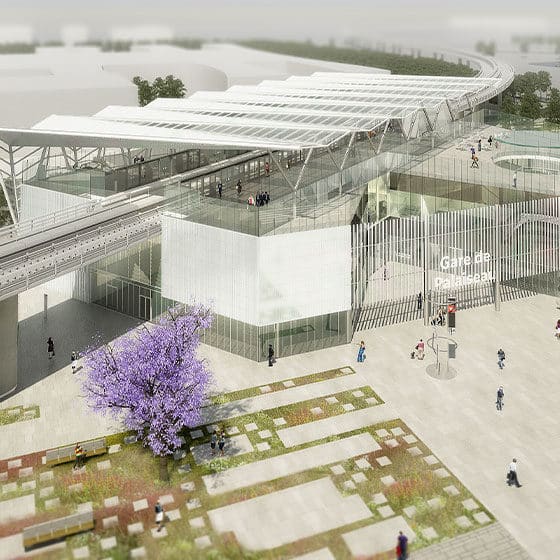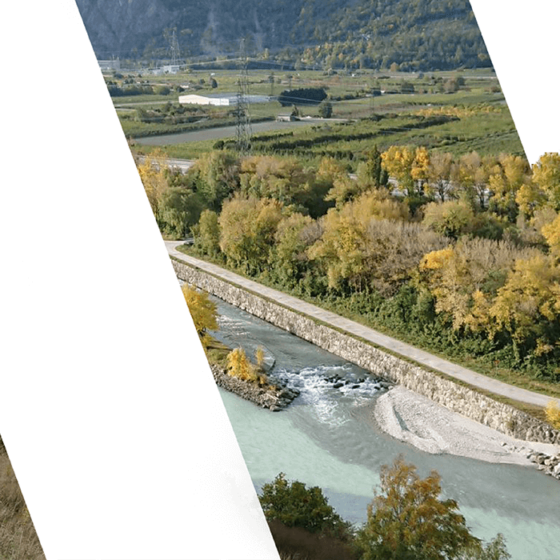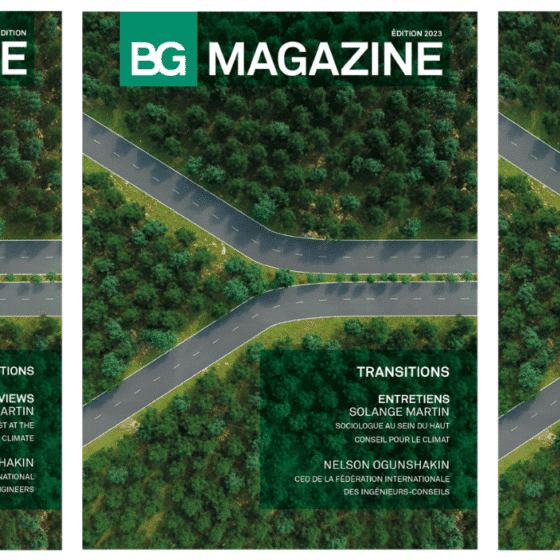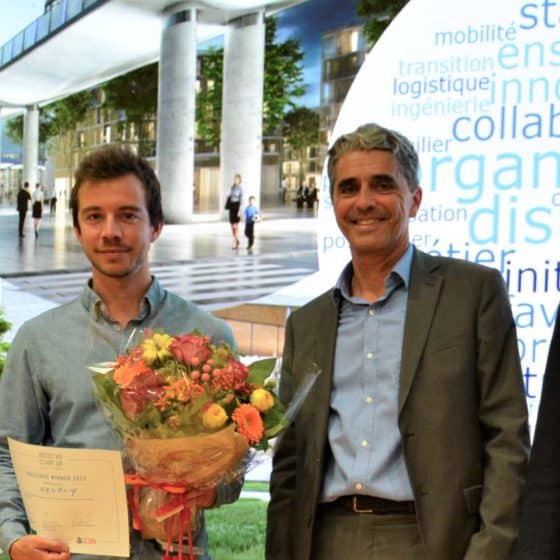Transport: stations, air terminals
People are travelling more today than ever before. Increased mobility and changing travel habits have had a significant impact on infrastructure (stations, air terminals, etc.) which has had to adapt accordingly.
Developing larger stations
Urban mobility and door-to-door transport needs have changed considerably in recent years. So too have railway and airport hubs (i.e., stations and terminals) which have had to adapt to keep pace with demand for passenger services. These buildings serve not only as passenger reception areas, but also as recreational spaces, which is why their design has to factor in comfort and security considerations, etc.
Accounting for 30% of C02 emissions, the transport sector currently faces significant challenges. Decarbonisation is top of the agenda. In order to meet net-zero commitments by 2050, the transport sector must strive to become less energy-intensive and operate more efficient mass transit systems.
Another issue concerns the daily mobility needs of individuals (commuter journeys). Journeys are made more frequently not only as a result of urbanisation, but also in view of the mobility needs of individuals travelling between their place of work and their home address.
The rail network pledges to meet all the challenges and needs of its users. However, as increased passenger traffic increases the number of users, stations are now facing capacity issues. As user numbers continue to grow, infrastructure must adapt accordingly. It is no easy task to increase the size of stations in city centres, given the scarcity of available space. In response to the challenges posed by urbanisation, engineers and architects are required to design extension plans underground.
BG’s multi-disciplinary teams are passionate about transport planning and have the capacity to manage large-scale projects. Their tasks invariably involve developing stations for new lines (Grand Paris Express, Lyon, Toulouse line 3) and extending urban stations (Geneva, Toulouse line 1, etc.)




Ground infrastructure affected by evolving air traffic needs
The rise in air traffic, due in no small part to the low-cost model, new on-boarding facilities for short-haul flights and an increase in destinations, means airports are required to accommodate greater passenger flows. This development places sustained pressure on all airport infrastructure and the facilities located within the immediate vicinity of the airport.
Airports therefore also face the following challenges:
- Accommodating ever-growing passenger numbers and demand for services
- Drastically reducing the C02 emissions of airport infrastructure, for instance ground transport used, energy consumed by buildings, etc.
- Creating infrastructure to facilitate passenger mobility not only within the airport, but also in surrounding areas – connecting airports to city centres via public transport.
- Complying with airport security regulations.
The BG Group is in a unique position in so far it has the capacity to develop new infrastructure and adapt existing infrastructure.
We offer a wide range of services:
- Passenger and visitor flow management across various public spaces (lounges, comfort and catering services) and restricted areas (departure lounges, access to boarding bridges).
- Decarbonisation of airport infrastructure along with integration of renewable sources of energy (incl. hydrogen for ground logistics vehicles).
- Fire protection
- Managing areas located within the immediate vicinity of the airport (visitor traffic and parking requirements)
- Technical control station
News and blog
We are at your service. Please contact us!
Marc Emery
Renaud Tumino
Michael Enzmann
Yohann Jacquier
Marco Mincarelli
Contact one of our offices
Contact one of our offices by clicking the link below.
Signup to our newsletter













